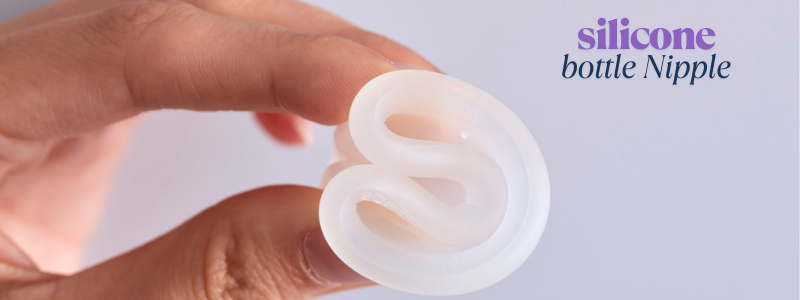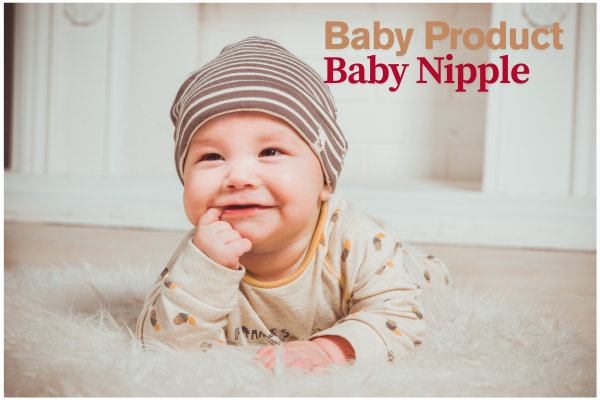As parents, we need to choose the right nipple for your baby, starting with a slow-flowing nipple. Finding the right baby Feeding bottle nipple can make a huge difference in the comfort of feeding your baby and your peace of mind. Also, observe your baby’s behavior during feeding. Feeding bottle nipple One of the most trusted options is the Philips Avent Natural Baby Bottle Nipple – and for good reason.

Table of Contents
Product Overview:
Brand:
Avent Feeding bottle nipple.
Type:
Natural, wide-neck silicone nipples, Soft, flexible, wide-shaped nipple promotes natural latch-on so it’s easier for baby.
Material:
BPA-Free, soft silicone.
Age Group:
Available in various flow rates Feeding bottle nipple(Newborn, Slow, Medium, Fast, Variable)
Compatible With:
Philips Avent Natural Baby Bottles.
Nipples Quality and Design:
Philips Avent Bottle Nipple is a famous brand nipple, it is made of best quality material for babies, this nipple is amazing in design and soft, this feeding bottle nipple is very useful for new mothers.
How many types of teats are there?
They are a little more expensive than others, but the performance, anti-colic feature and baby-friendly design more than make up for it.
• Philips Avent first flow feeding bottle nipple.Ideal for newborns.
• This newborn flow feeding bottle nipple is good for newborns who are 0 months+ and are breastfeeding.
• The slow flow avent feeding bottle nipple is best for newborns who are 1 month+ and are breastfeeding babies.
• The feeding bottle nipple is good for newborns 3 months+ and above.
• The fast flow feeding bottle nipple is for babies who are fast feeders and have a strong sucking force. It is designed for babies above 6 months. It allows the milk to come out faster. It can also be helpful for babies who gain weight slowly.
• Variable flow nipple: This is the nipple which adjusts according to the sucking power of the baby. When the baby sucks milk, milk starts flowing and when he stops, the flow stops. This makes it easier for the baby to swallow milk and breathe.
• When the baby drinks milk quickly from the feeding bottle nipple and he is not having any problem in swallowing the milk, in such a situation he needs a thicker nipple.
When to change Philips Avent nipple?
When the mother is not able to feed her baby due to some reason, then in this situation a feeding bottle is needed for the baby. And we have to take extra care of the cleanliness of this bottle. The life of the bottle is long. But due to the short life of the nipple, we should change it every 3 months.
Before use, we should check the feeding bottle nipple by pulling it completely. It should be replaced as soon as any sign of damage is found.
What We Love (Pros):
1. Design :
The breast-shaped design is great.The nipple has a wide, breast-like shape that makes it easier for babies to breastfeed, especially those who are bottle-fed and breastfed. It supports a more natural feeding motion.
2 . Soft and flexible silicone:
The ultra-soft silicone is soft and mimics the feel of the breast, making it comfortable for babies. Philips Avent Natural Baby Bottle Nipples .The nipple is also durable and it is flexible won’t break while feeding.
3. Anti-Colic Valve:
Each nipple includes a built-in anti-colic valve that reduces air intake — helping to prevent gas, colic, and spit-up.ingests while feeding, which can help to alleviate symptoms of colic, gas, and fussiness. These valves work by allowing air to enter the bottle, preventing a vacuum from forming as the baby drinks.
Cons :
A common problem with Philips Avent feeding bottle nipples that most new parents are not aware of is that the nipples can get wrinkled during feeding and can get stuck when you don’t assemble them properly. Also, some parents report that the flow rate is too slow for slow speed users and too fast for fast speed users. Despite being soft, it can get damaged after repeated sterilisation
Multiple Flow Options:
Parents can choose nipples with different flow rates as their baby grows. The flexibility of the nipple helps with feeding at every stage. Babies aged 1 month to 3 months use the number 2 slow flow nipple, and babies aged 3 months to 6 months use the medium flow number 3 nipple. And babies aged 6 to 12 months use the fast flow nipple.
Easy to Clean and Use:
Cleaning and sterilising the nipple is a very simple process. Dishwasher safe and well-manufactured to fit perfectly into the Avent Natural bottles. Make sure all food residue is removed and then rinse thoroughly. If you use a brush to clean the tip of the feeding nipple, clean it as carefully as possible to avoid damaging it. Sterilise the cleaned parts using the Philips Avent steriliser, or boil them in water for 5 minutes.
Things to Consider:
Things to note:
• Philips Avent bottle nipples are a little expensive:
Price is a bit higher:
But compared to other brands, they are well designed and very useful. Compared to local or generic brands, Philips Avent nipples are a little more expensive.
Fits only Avent Natural bottles:
These nipples are not compatible with other brands of bottles or even Philips Avent Classic bottles.
Confusion over flow rate:
Some parents find it difficult to choose the right flow rate initially – so experiment a bit on this.
Final Verdict:
The Philips Avent Natural Nipple is a high-quality nipple. A trusted product by parents, it offers comfort, safety and convenience for mothers who are unable to breastfeed. Whether you are combining bottle and breastfeeding or are exclusively bottle feeding, these nipples are a reliable option.


1 thought on “Philips Avent Baby Feeding Bottle Nipples–A Gentle Choice for Little Ones :”